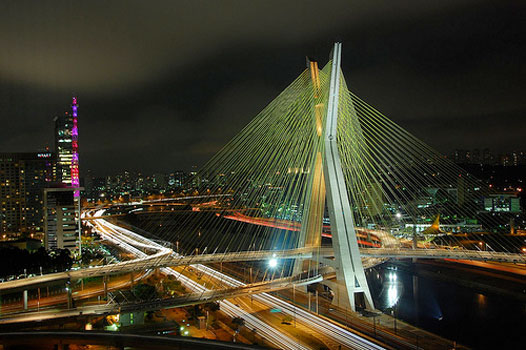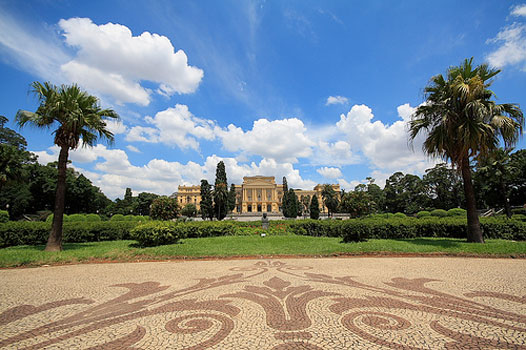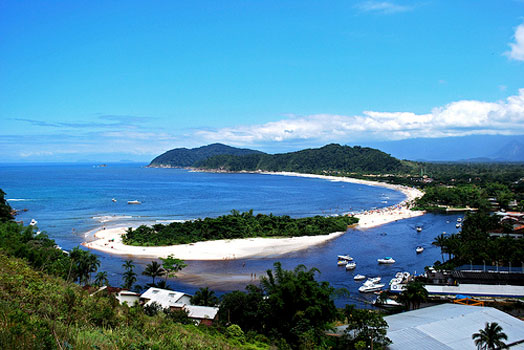Sao Paulo Travel Guide
Ibirapuera Park
Address: Avenida Pedro Alvares Cabral, Sao Paulo Sao Paulo
The Parque do Ibirapuera is a large park near the centre of Sao Paulo with many interesting features, including a planetarium, a Japanese pavilion, a gymnasium, the Obelisk of Sao Paulo (a symbol of the Constitutionalist Revolution of 1932), and the Cicillo Matarazzo Pavilion, which houses the Museum of Contemporary Art and is typically the venue for large events like the São Paulo Art Biennial and São Paulo Fashion Week. The park is home to many other museums, including the Air Force Museum and Folklore Museum. It also has jogging and walking trails, and a picturesque lake, and is a good spot to explore for those wanting a bit of holiday exercise or some fresh air in the heart of this sprawling city.<br /><br />
Football Museum
Address: Estádio do Pacaembu, Praça Charles Miller 1, São Paulo Sao Paulo
Even for non-football fans, Sao Paulo's Museu do Futebol (Football Museum) is a must-see tourist attraction. The Brazilian team has been unquestionably the most delightful and successful national team in football's history, and the sport is supported with religious fervour throughout the country. The beauty of Sao Paulo's Football Museum, housed within the Pacaembu Stadium (which is itself an icon of the city), is that is takes a modern, interactive approach toward its exhibitions, with holographic displays, touch-screen information panels, and various other multimedia installations.<br /><br /> Highlights of the museum include the 'History of the World Cup' section, and a display introducing Brazil's 25 greatest-ever players (the Anjos Barrocos, or 'Baroque Angels'). An appreciation of what football means to the country is vital to getting to grips with Brazilian culture, and Sao Paulo's Football Museum is a wonderful introduction in this respect. Be sure to budget at least two or three hours for the museum, as there's a lot to see.<br /><br />
Julio Prestes Cultural Center
Address: Sao Paulo
This cultural centre and concert venue is located in what was once the Julio Prestes Train Station, an imposing and meticulously restored building. The highlight of the centre is the Sala Sao Paulo, a concert venue which seats nearly 1,500 people and is home to the renowned Sao Paulo State Symphonic Orchestra (OSESP). Specifically designed as a venue for symphonic and chamber music, the Sala has world-class acoustics and is the best place for classical music lovers to catch a concert in the city. Other events are also hosted at the cultural centre, and the variety of music concerts is vast, with pop and rock featuring alongside the traditional, classical offerings.<br /><br />
Sao Paulo Carnival
Where: Sambodromo and Avenue Paulista are central to the festivities.,Sao Paulo
When: 11 February 2018
Although Sao Paulo's carnival is less famous than Rio's version, travellers will still be enthralled by the glittering, colourful, riotous fun of a city-wide party, and may even find that the comparative lack of tourists makes the festival seem more authentic. Tickets are also significantly cheaper and easier to come by in Sao Paulo.<br /><br /> The main parades of the carnival (called blocos) make their way down Avenue Paulista, and the samba school competitions that form the backbone of the festival programme are held in the Sambodromo, which accommodates up to 30,000 people. As elsewhere in Brazil, the residents of Sao Paulo dress up in vibrant costumes to celebrate carnival.<br /><br />
Brazilian F1 Grand Prix
Where: Autódromo José Carlos Pace (Interlagos),Sao Paulo
When: 12 November 2017
Often selected as the site of the final race of the Formula One season, the bumpy Interlagos Circuit of Autódromo José Carlos Pace is not a favourite with the drivers, but for spectators it is one of the most thrilling circuits. The stands are often filled with Brazilian greens and yellows, as locals cheer on their resident F1 celebrity driver and 2008 winner Filipe Massa. The track is 10 miles (16km) away from the city centre and is considered a challenging course, which makes for an exciting and often unpredictable race.<br /><br />
Sao Paulo LGBT Pride Parade
Where: Ave. Paulista,Sao Paulo
When: 3 June 2018
The Sao Paulo Gay Parade is one of the city's major tourist events and is the highlight of a month-long programme of events that includes parties, street fairs, film festivals, shows and the traditional Gay Day at Hopi Hari amusement park. The LGBT (Lesbian, Gay, Bisexual, Transvestite and Transsexual) Parade in Sao Paulo is said to be the biggest event of its kind in the world, having grown from 2,000 people in 1997 to include more than three million people today, who gather on the streets waving rainbow flags in condemnation of homophobia, racism and sexism. As with most Pride parades, many people choose to dress up outrageously and the parade is accompanied by lots of parties and festivities.<br /><br />
(Data provided outside US and Canada by Foreca, Data provided for US and Canada by WDT)
| Jan | Feb | Mar | Apr | May | Jun | Jul | Aug | Sep | Oct | Nov | Dec | |
| Average High | 27° | 28° | 27° | 25° | 23° | 21° | 21° | 22° | 22° | 25° | 25° | 26° |
| Average Low | 19° | 19° | 18° | 17° | 15° | 13° | 12° | 13° | 13° | 15° | 17° | 18° |
(Data provided outside US and Canada by Foreca, Data provided for US and Canada by WDT)
| Jan | Feb | Mar | Apr | May | Jun | Jul | Aug | Sep | Oct | Nov | Dec | |
| Average High | 81° | 83° | 81° | 77° | 74° | 71° | 71° | 73° | 73° | 77° | 78° | 79° |
| Average Low | 67° | 67° | 66° | 63° | 59° | 56° | 55° | 56° | 57° | 60° | 63° | 65° |
| Description Flat blade attachment plug. |
Voltage 110/220 V/240v |
Frequency 60 Hz |
Type A |
| Description Flat blades with a round grounding pin. |
Voltage 110/220 V/240v |
Frequency 60 Hz |
Type B |
| Description Round pins. |
Voltage 110/220 V/240v |
Frequency 60 Hz |
Type C |
| Description Two round pins and a grounding pin. |
Voltage 110/220 V/240v |
Frequency 60 Hz |
Type N |



